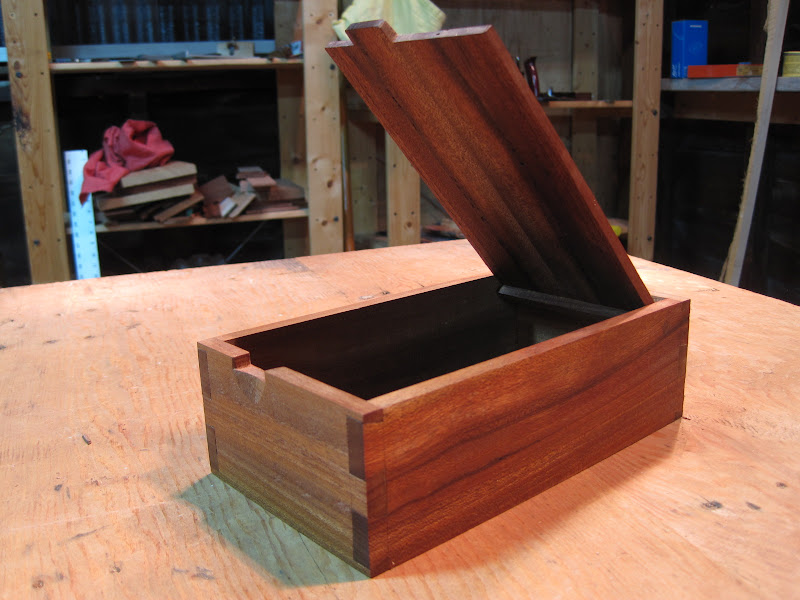a late holiday pressie for my wife sarah ends in a hastily wrapped project with a cryptic note:

the project began with some african mahogany that i needed to rethickness from 3/4" to some planks roughly 5/16" for a small box project that she can put do-dads in:

joining resawn material like this is called a bookmatch:

I don't usually like the hinge hardware you find on small scale boxes, so I'm looking at different ways to make a hinge from wood. this one bonds the axle to the interior of the lid, then with two holes drilled in the sides, you get a mechanism that can work okay. I first made a small dado in the lid to better accept the axle and prevent it from squggling around during clamp up:
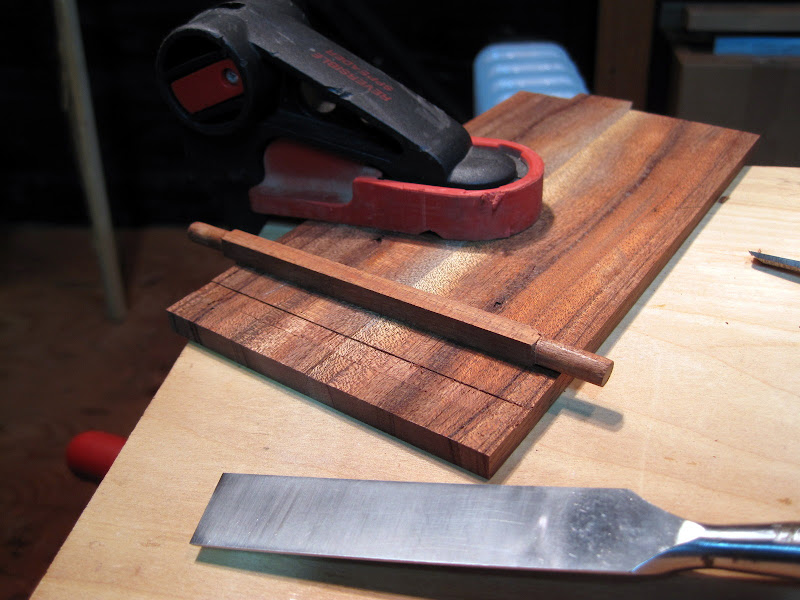
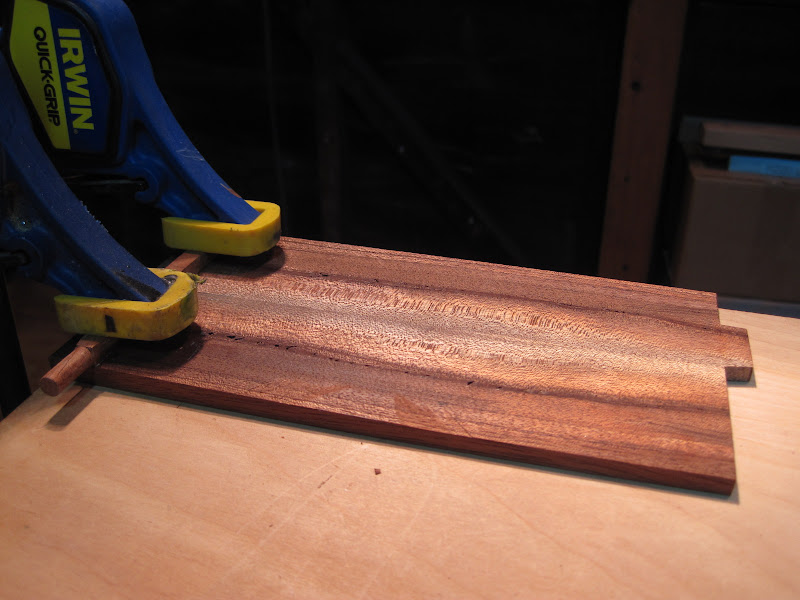
lid detail. I have to relieve the corner in order to rotate inside the box with this hinge design. I did this trimming with a chisel, and preferred to leave the cut marks in place instead of sanding this part smooth

Pre-assembly cross section, just to see how this little thing goes together. The bottom is facing upwards here, and so the idea is to place the lid into the side holes, and then glue it all together at the dovetail pin/tail junctions. Pretty simple

closed and finished. I'm no fan of stains that change wood's intrinsic colors and varnish or thick sticky resins are not my thing either. I use a paste wax. It doesn't really change the color much at all. I find it very sensuous to apply, and it smells like oranges...wonderful.
Here, you can just make out the 1/4" dowel pin where the hinge nests through the side of the box. everything is encased. sure, you loose a bit of storage capacity by my answer to that problem is: make some more boxes!!
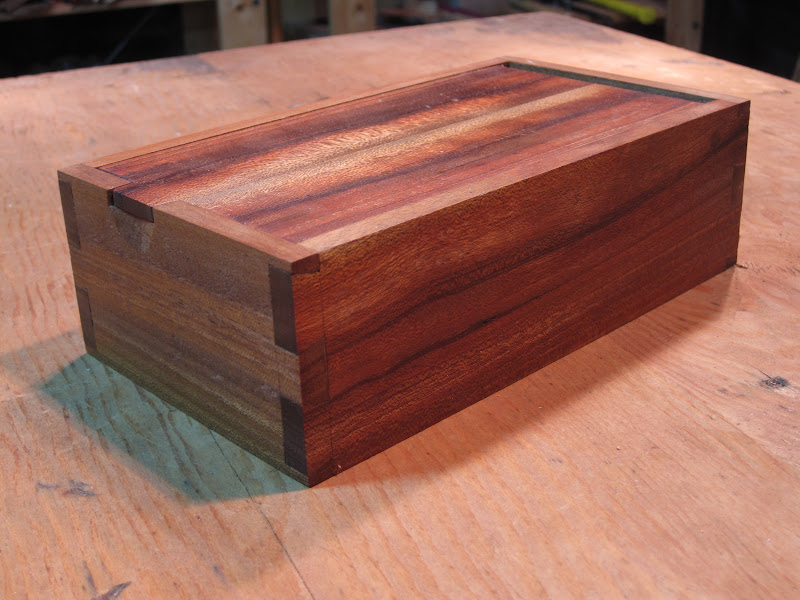
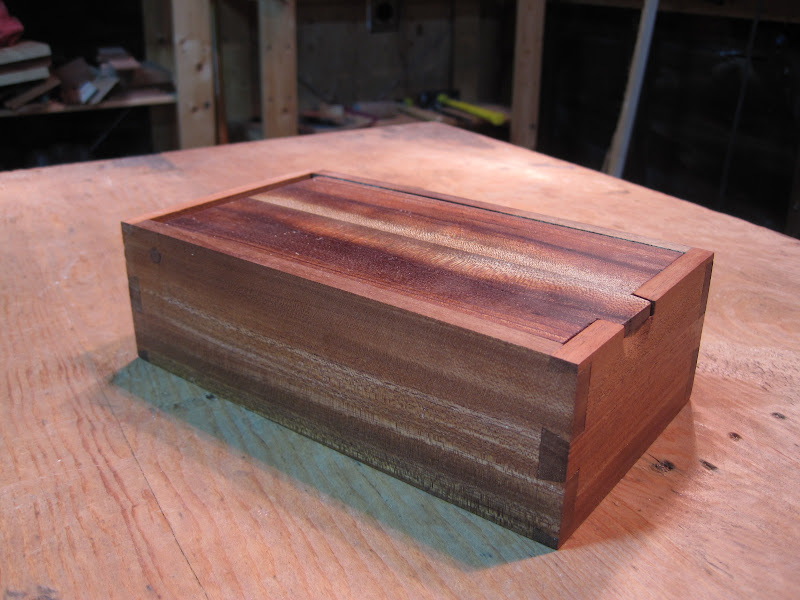
yawning open. Sarah likes the tab for the lid. makes it easy to open. The box is still new and there is a bit of friction in the hinge and the lid sides rub against the inside of the box. I imagine it will loose this friction with use, which is too bad (i like the way it behaves right now)
